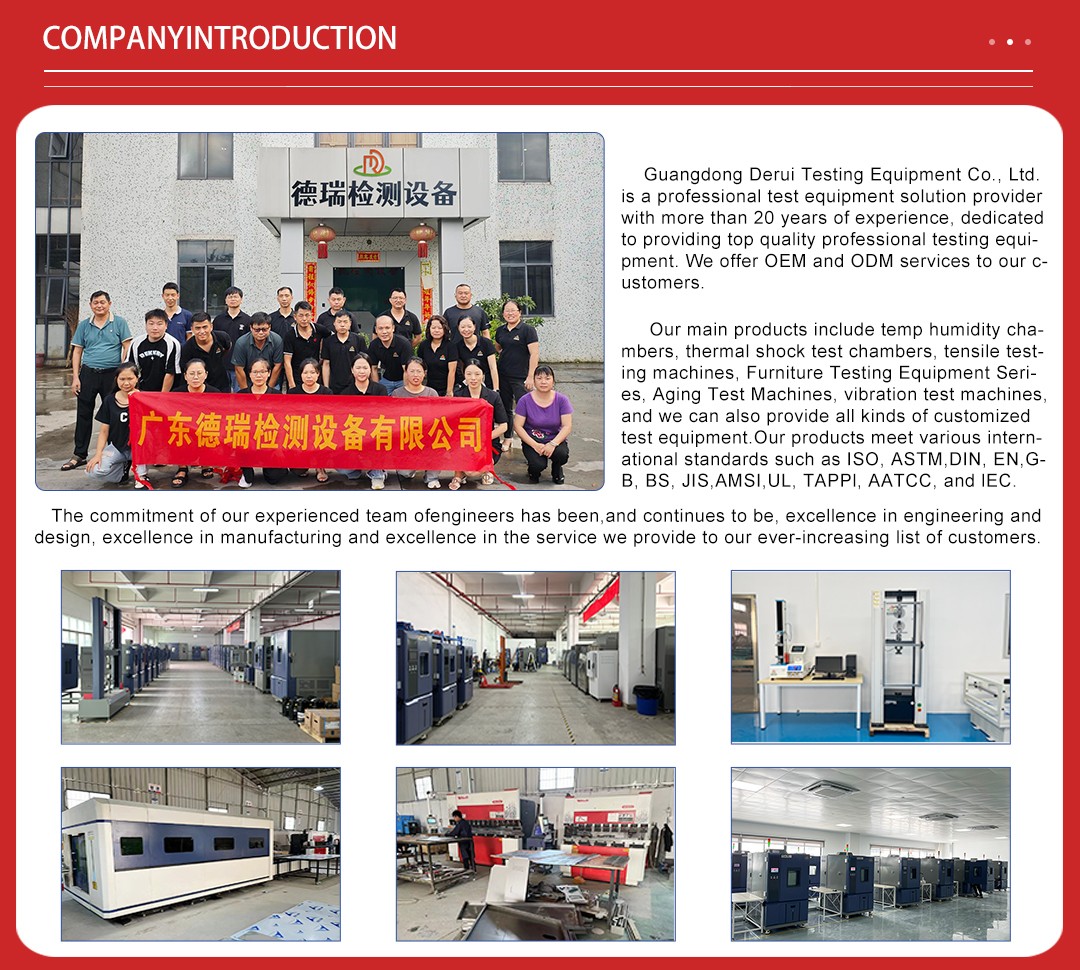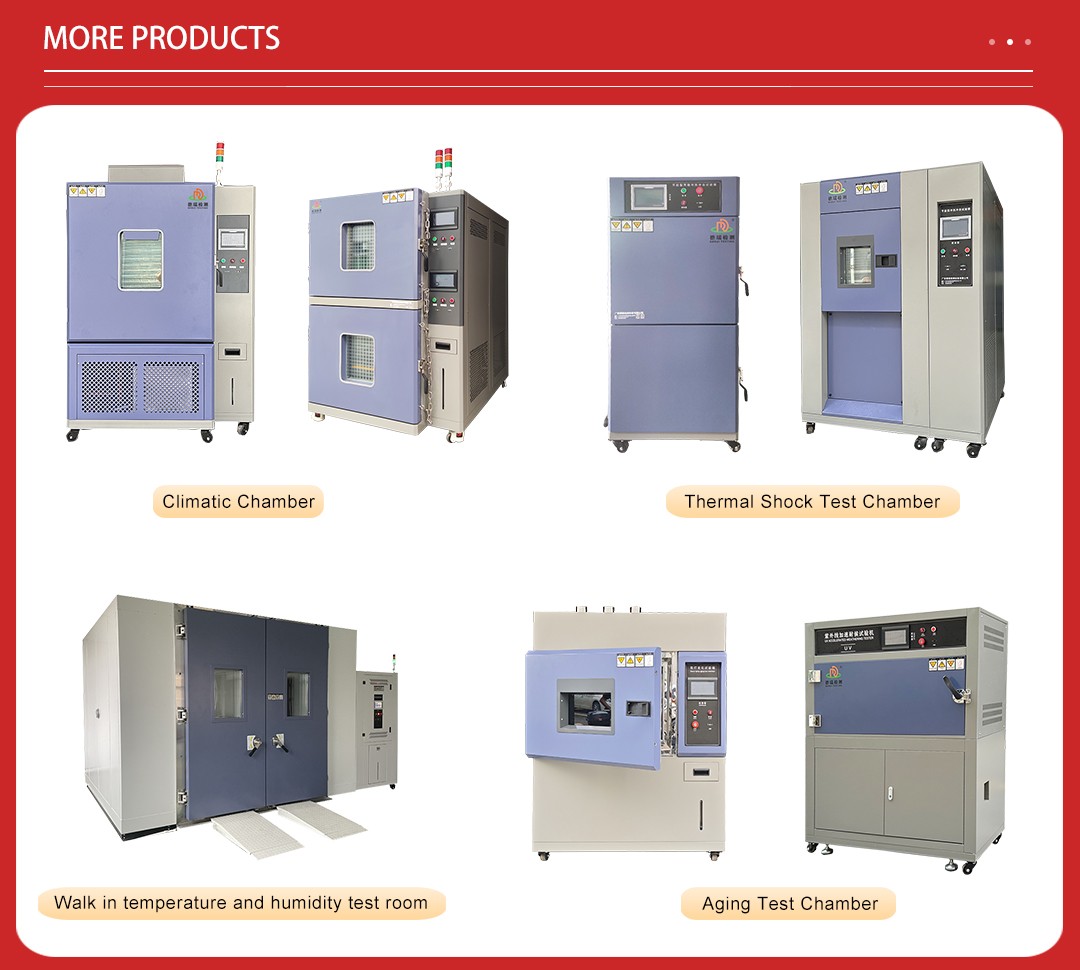
In the realm of materials science and engineering, understanding how materials react to various environmental conditions is crucial for ensuring their durability and longevity. Material temperature an ...

In the realm of materials science and engineering, understanding how materials react to various environmental conditions is crucial for ensuring their durability and longevity. Material temperature and humidity stability test chambers play a vital role in this process by simulating diverse climatic conditions, allowing researchers and manufacturers to evaluate the performance and stability of materials under controlled environments. These advanced test chambers are essential for a wide range of applications, from product development to quality assurance.

The Significance of Environmental Stability Testing
Materials used in various industries, from construction and automotive to electronics and aerospace, are subjected to a broad spectrum of temperature and humidity conditions throughout their lifecycle. Environmental stability testing helps to:
3. Validate Design and Manufacturing Processes: Environmental stability testing ensures that materials and products are designed and manufactured to withstand the rigors of their intended use.
Key Features of Material Temperature and Humidity Stability Test Chambers
7. Robust Construction: Built with durable materials and designed for longevity, these chambers ensure reliable operation and minimal downtime, even under demanding testing conditions.

1. Product Development: Assessing the performance and stability of new materials and designs under various environmental conditions, helping to optimize products for their intended use.
5. Failure Analysis: Investigating material failures by replicating the environmental conditions under which they occurred, helping identify the root cause and implement corrective actions.

| Model No. | DR-H201-64 | DR-H201-150 | DR-H201-225 | DR-H201-408 | DR-H201-1000 |
| Test Space Volume(Liters) | 64 | 150 | 225 | 408 | 1000 |
| Inner chamber size W×H×D(mm) | 400×400×400 | 600×600×460 | 700×700×480 | 700×750×800 | 1000×1000×1000 |
| Exterior chamber size W×H×D(mm) | 700×1652×1170 | 800×1715×1230 | 900×1660×1470 | 900×1710×1790 | 1200×1910×1725 |
| Temperature range | R: -20°C to +150°C L: -40°C to +150°C S: -70°C to +150°C (180°C optional) | ||||
| Humidity range | 20% to 98% RH (10% to 98% RH , 5% to 98% RH (optional) | ||||
| Temperature & humidity fluctuation | ±0.5°C/±2.0% RH | ||||
| Temperature & humidity uniformity | ≤ 2.0°C/3% RH | ||||
| Temperature change rate acc. IEC 60068-3-5 | Heating rate 3°C/min, cooling rate 1°C/min(average rate, no load) | ||||
| Exterior chamber material | High-quality carbon steel with painting | ||||
| Interior chamber material | SUS304 matte stainless steel plate | ||||
| Insulation material | Rigid polyurethane foam insulation | ||||
| Refrigeration system | Air cooled/Water cooled | ||||
| Hermetic compressor, single stage or cascade refrigeration system, environmental-friendly refrigerant | |||||
| Controller | “7””LCD Touch Screen Controller with PID control” | ||||
| Safety protection device | NFB(No fuse breaker), over pressure, over heat and over current protectors for compressor, over temperature protectors, over load protector of fan, dry heat protector,short of water protector | ||||
| Standard accessory | Sight window*1, Cable port(port Φ50mm / Φ100mm)*2, Shelves*2, LED Lighting device*1 Mobile Casters with foot cups, Power cable*5m | ||||
| Ambient temp. | +5 to +35°C | ||||
| Power supply | 220V AC 1Ø 50Hz | 380V AC 3Ø 50Hz | 380V AC 3Ø 50Hz | 380V AC 3Ø 50Hz | 380V AC 3Ø 50Hz |
| Customization service | Non-standard or special requirements can be customized. | ||||

Working Principle and Operating Conditions
Material temperature and humidity stability test chambers employ a combination of advanced heating/cooling elements, humidification/dehumidification systems, and sophisticated control algorithms to achieve and maintain desired conditions. Typical operating conditions include:
1. Temperature Range: -70°C to +190°C (-94°F to +374°F)
2. Humidity Range: 10% to 98% RH (relative humidity)
3. Temperature Control Accuracy: ±0.2°C (±0.36°F)
4. Humidity Control Accuracy: ±1% RH
5. Temperature Change Rate: Up to 10°C/min (18°F/min)
6. Humidity Change Rate: Up to 5% RH/min
7. Air Flow Rate: 300 to 1500 CFM (adjustable)
Case Study: Ensuring Smartphone Durability in Diverse Environments
A leading smartphone manufacturer aimed to ensure the durability of their latest devices in diverse environmental conditions. By investing in a material temperature and humidity stability test chamber, the company was able to:
1. Simulate Real-World Conditions: Replicate the temperature and humidity conditions found in various regions, from desert climates to tropical environments, assessing the performance of their smartphones under these conditions.
2. Identify Potential Issues: Testing revealed that certain components were susceptible to extreme humidity levels, leading to intermittent failures.
3. Optimize Material Design: Based on the test results, the manufacturer implemented design changes, such as using moisture-resistant materials and improving internal sealing to enhance the devices' resistance to humidity.
4. Validate Improvements: Conduct comprehensive testing to ensure that the optimized smartphones met the required performance standards and maintained functionality under diverse environmental conditions.
Material temperature and humidity stability test chambers are an indispensable tool for materials science and engineering professionals. They provide the precision and control needed to evaluate the performance and stability of materials under various environmental conditions. By investing in these advanced testing solutions, researchers and manufacturers can enhance material durability, reduce time-to-market, and ultimately drive innovation and quality in their respective industries.
Choosing the right material temperature and humidity stability test chamber depends on various factors, such as the required temperature and humidity ranges, desired accuracy, and available budget. It is essential to work with a reputable manufacturer that offers customizable solutions, robust construction, and excellent customer support. By doing so, you can ensure that your investment in a testing chamber delivers long-term value and helps you achieve your material performance and stability goals.
As the demand for high-performance materials continues to grow, so too will the importance of environmental stability testing in driving innovation, quality, and customer satisfaction.


Not search wanted products